Visit Hanoi – the past and the present
Hanoi – Thăng Long – The Rising Dragon, once my hometown, will forever have a special place in my heart. With a history that goes back more than a thousand years including changing imperial dynasties, wars against invaders, the turmoil of the colonial period and the harsh northern climate, it has now developed in to a large city with its feet firmly in the modern world while still aware of its rich history.

A visit to Hanoi means you are likely to fly in to Hanoi’s international airport Noi Bai. With the new highway from Noi Bai, you have a swift connection to the old town which today is surrounded by high rises. To me, as a highly biased judge, Hanoi has managed to find the perfect balance between keeping its soul while embracing the opportunities of modern world.
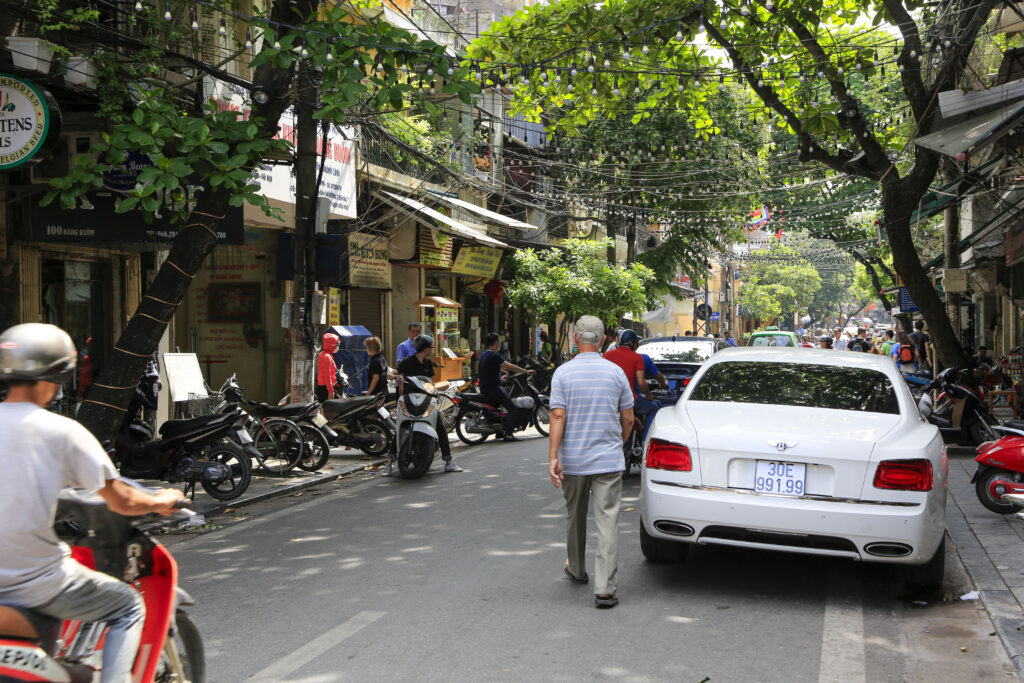
Hanoi is situated on the western shores of the Red River about 100 kilometers inland from Hai Phong on the coast. Between the two cities is the fertile Red River delta which millions of people depend upon for their rice and other crops.
For the history traveler, Hanoi is a goldmine not only for its relics in the city, but also for its proximity to many of the legendary battlefields of the colonial era. Viet Tri, Hoa Binh, Nam Dinh and Ninh Binh are all within range of a day trip.
During the colonial era, the road to Hai Phong was littered with concrete watch towers and bunkers where colonial soldiers were posted to guard the road from enemy infiltration. It was popular among Viet Minh fighters to sneak up on them at night to throw in explosive charges, killing all inside. Former Viet Minh fighters have testified about their deep appreciation to the French commanders for placing their soldiers in such easily located spots.
Hanoi is also a good base for those who wants to take longer trips and explore the former Viet Minh sanctuaries in the deep valleys of the northern provinces.
Old Town – Pho Co and the Hoan Kiem lake area
A visit to Hanoi will always revolve around the old town, Pho Co. During the late 19thand early 20thcenturies, the old town was made up of just 36 streets. Each street was named after the merchandise that were sold or traded there. The names are still the same, but the merchandise have changed.
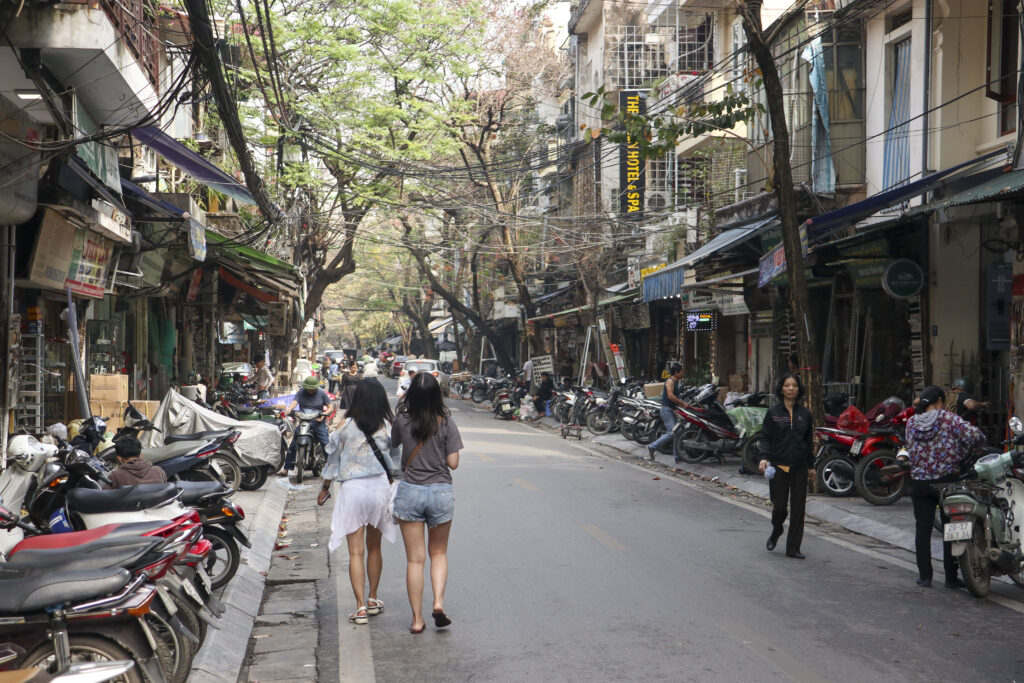
The old town is in many ways still the center of the city, especially for travelers. This is where many of the tourist hotels are located, also many bars and restaurants will have their address there. For some time, Hang Buom Street has established itself as the main backpacker area, however, this part of town is not where you will want to go to discover the city. Just a block or two away the real Hanoi welcomes you to enjoy the smells, sounds and atmosphere that are unique to this Asian beauty.
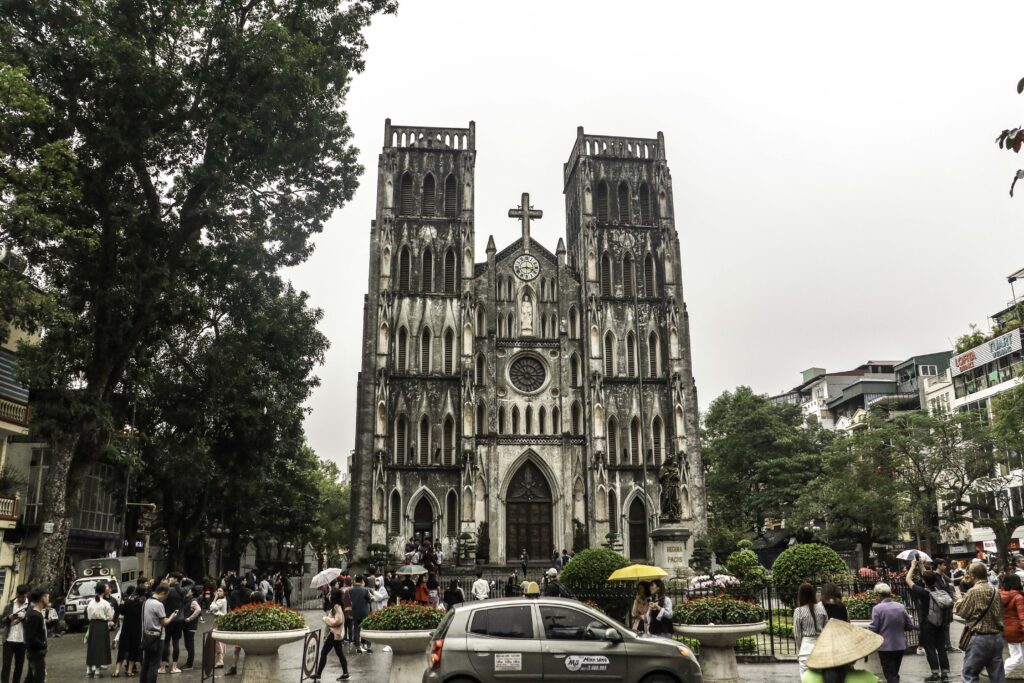
Walking around the streets north of the Hoan Kiem lake is the perfect way to discover Hanoi’s old quarters. The area stretches down on the west side of the lake and it is there that you will find the old St. Joseph’s Cathedral. This late 19thcentury Catholic church is built in a similar style as the Notre Dame in Paris and is Hanoi’s oldest church.
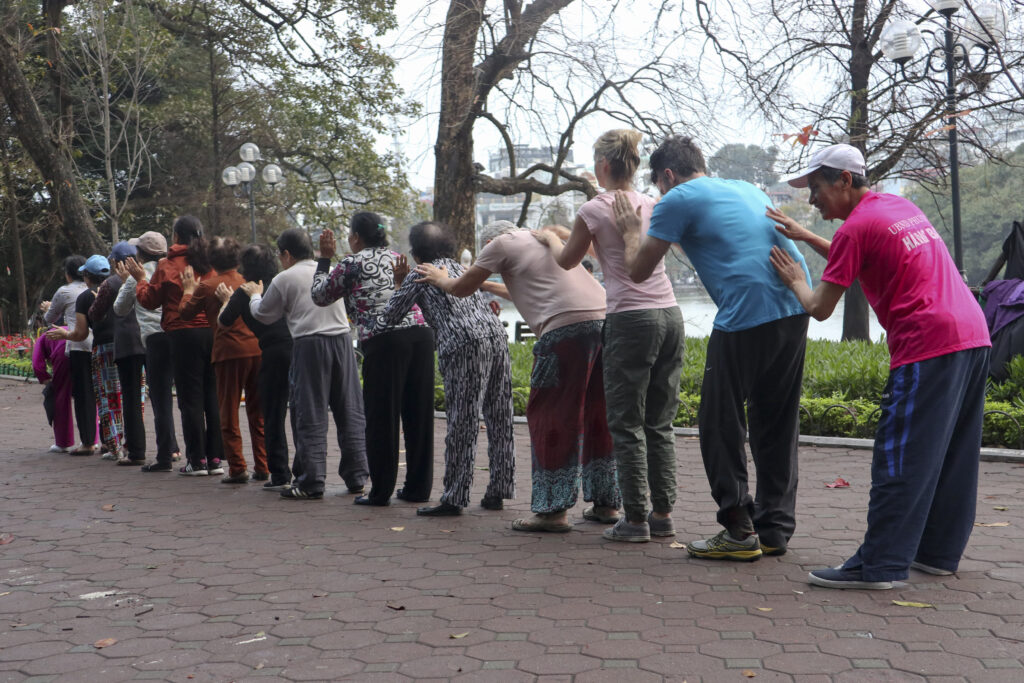
Early in the morning the locals will gather around the lake for their morning exercise. Going back a few years they would mainly engage in Thai Chi type of exercise but today it can be quite a spectacle with even tourists joining in.
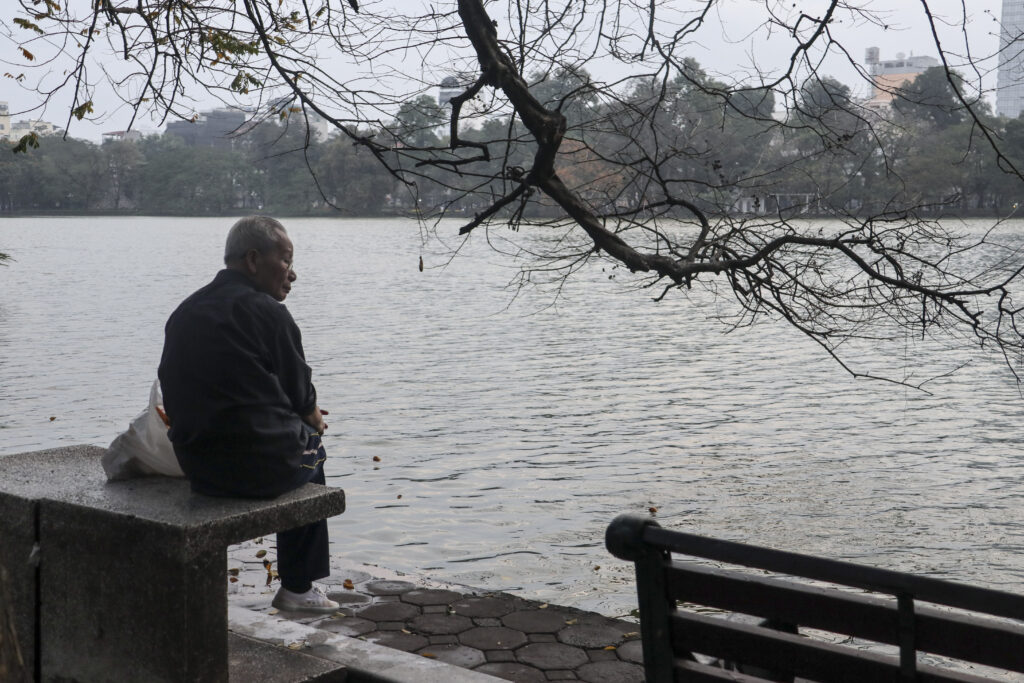
A walk in Hanoi should include the lake’s east side. Here you will find the opera house located next to the Hilton which is built as a smaller version of the Hilton in Paris. The Metropole hotel is also here and is one of the city’s most beautiful colonial structures and its lounge bar is probably the best place to enjoy an afternoon cocktail with that colonial touch. Metropole is one of the must visit landmarks in town thanks to its long and colorful history and its intricate architecture.
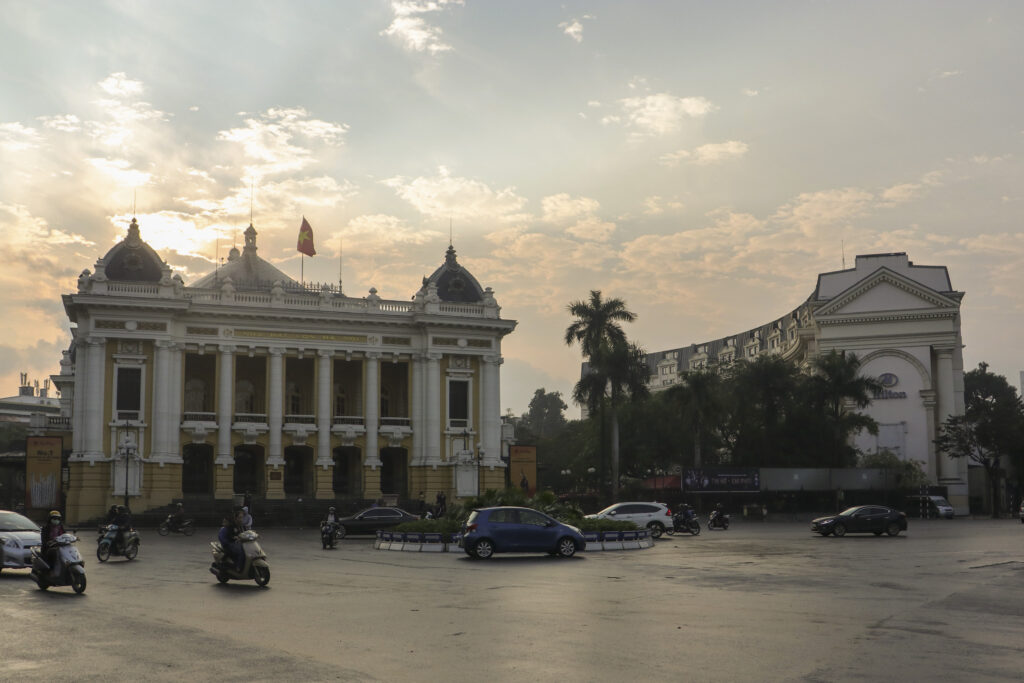
Every one of these buildings has its own tumultuous history and there just isn’t enough room to go in to details about it in this article. Just north of Metropole, along Ngo Quyen Street, is the former mansion of the Governor of Tonkin, today it is a government guest house. One can only imagine how this impressive and even perhaps intimidating building would have stood out one hundred years ago.
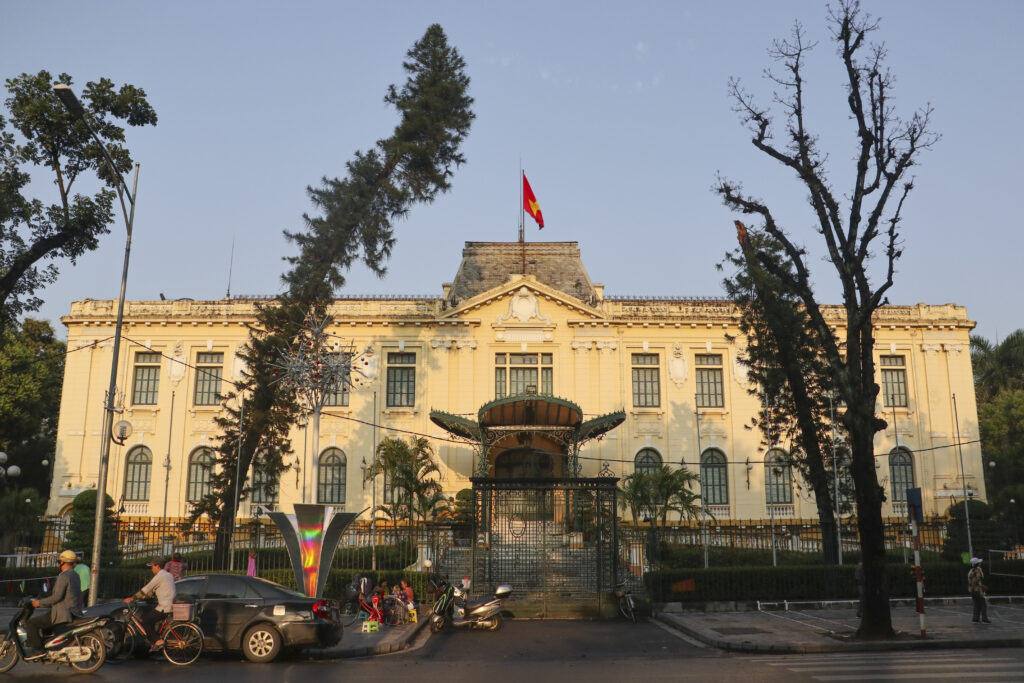
After having completed the walk around the Hoan Kiem Lake and you reach the small streets of the old town again, there are plenty of small cafés and bars where you can sit down and enjoy a refreshing cold beverage or a cup of the delicious local coffee while you’re watching the theatre of life play out just a few feet away.
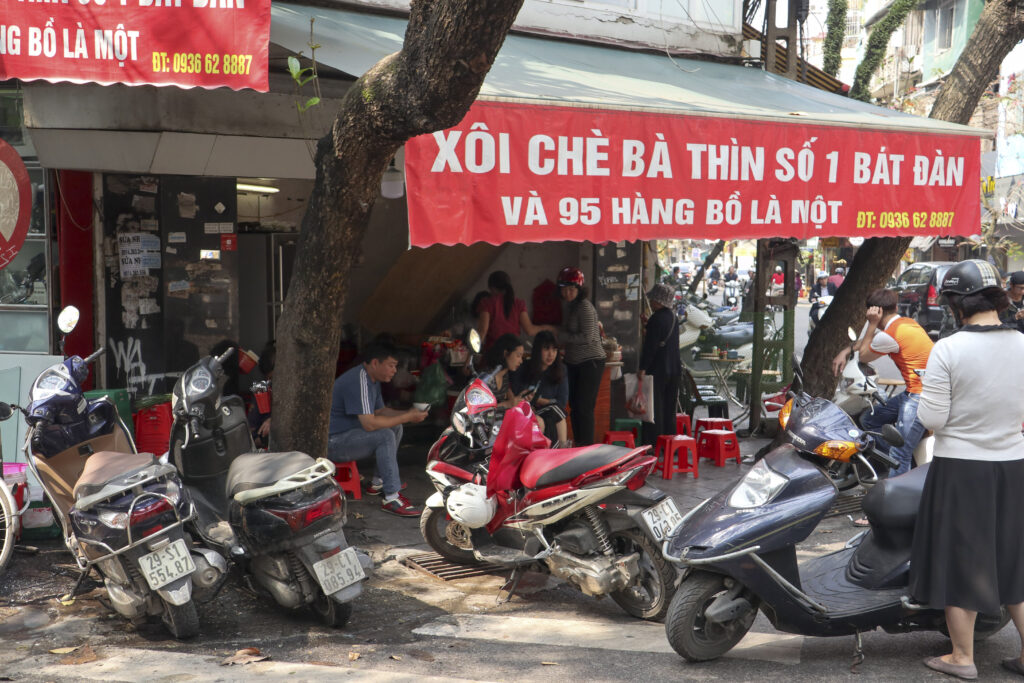
A couple of kilometers west of the old town is Van Mieu, the Temple of Literature, which was built nearly 1,000 years ago as Vietnam’s first national university. We did not visit the site on our last visit, so I have no up to date pictures to post here, but I do recommend a trip here as it will give a better picture of the long and colorful history of the city.
Food
At least on my travels, food is always a vital part of my trip. Hanoi is a great destination for foodies with its array of traditional dishes and the international fusion dishes that are served in restaurants throughout the city.

The iconic Phở soup is probably the best known dish from Vietnamese cuisine in general. Phở is originally a northern dish but is now popular all across the country. Noodles are served in a tasty broth together with beef or chicken and fresh vegetables. It is served all day long in small local restaurants. Personally, I prefer having Phở for breakfast as a start to a long day of exploring Vietnam.
Another must place to go is the Cha Ca La Vong restaurant on Cha Ca street. This restaurant has been around since early last century, serving the same dish ever since: “Cha Ca” is grilled fish served with a mix of vegetables and herbs together with noodles. In typical fashion though, it seems copy restaurants with the same name has popped up next to it. Make sure you go to the correct one.

Snake meat is still a popular dish in parts of the country and the snake restaurants are located on the east side of the river in the village Le Mat. They will all serve it in the traditional fashion. First the snake is slaughtered, then it is drained of blood and bile that are put in bottles together with rice wine. As wait at your table, they will start serving the traditional dishes, including vegetables and fruits, while you wait for your snake to be cooked. The snake will be stir fried with spring onions and garlic and it makes for a sensational main course. I have kept coming back to the same restaurant since 2003. It is called Nguyen Duc and is situated in a beautiful Chinese-style house hidden in a maze of streets.
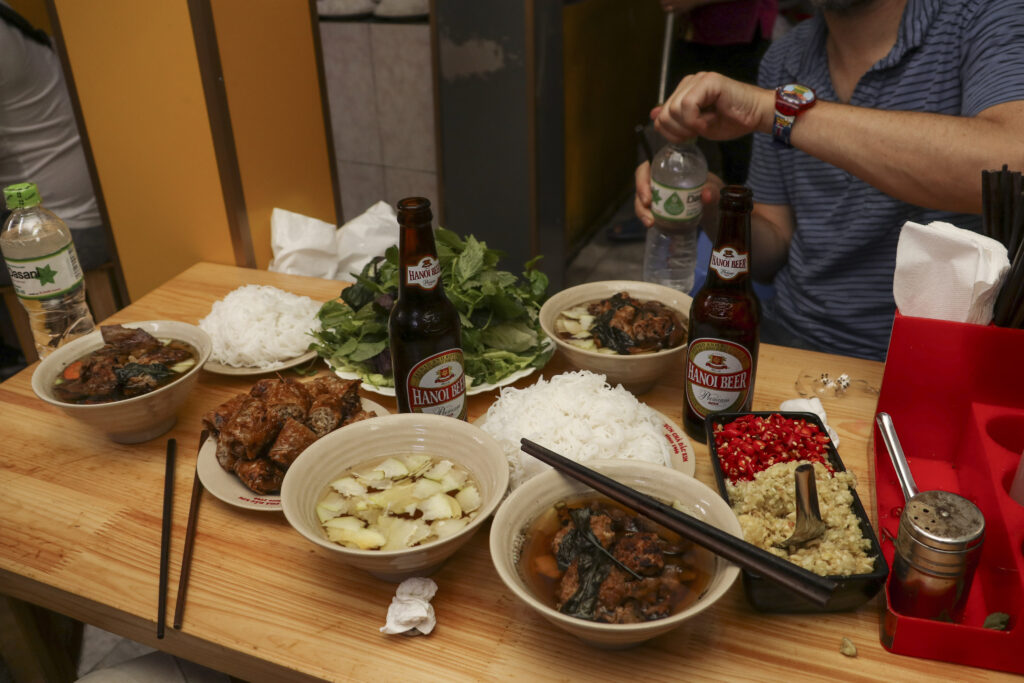
Another local favorite is the Bun Cha and Nem. Bun Cha is a pork dish served with white noodles in a tasty broth and the Nem are the Hanoi spring rolls, always together with fresh herbs. These are just amazing dishes that are served all across town. You can get them at the tourist restaurants as well as the high end places, but they are always best at the local street side joints. Whether you sit on the sidewalk on a miniature plastic chair or in one of the loud one dish restaurants in the old town, you will enjoy the experience of having these dishes served the way the locals do.

The Hanoi Citadel – Thanh Long
As mentioned previously, Hanoi is a very old city. It is more than 1,000 years since the first royals established themselves in the area of where the Citadel is today. Later dynasties continued to add palaces, walls and gates. Over the centuries some of these fell in to disrepair and the French colonizers destroyed parts of the Citadel during the 19thcentury.
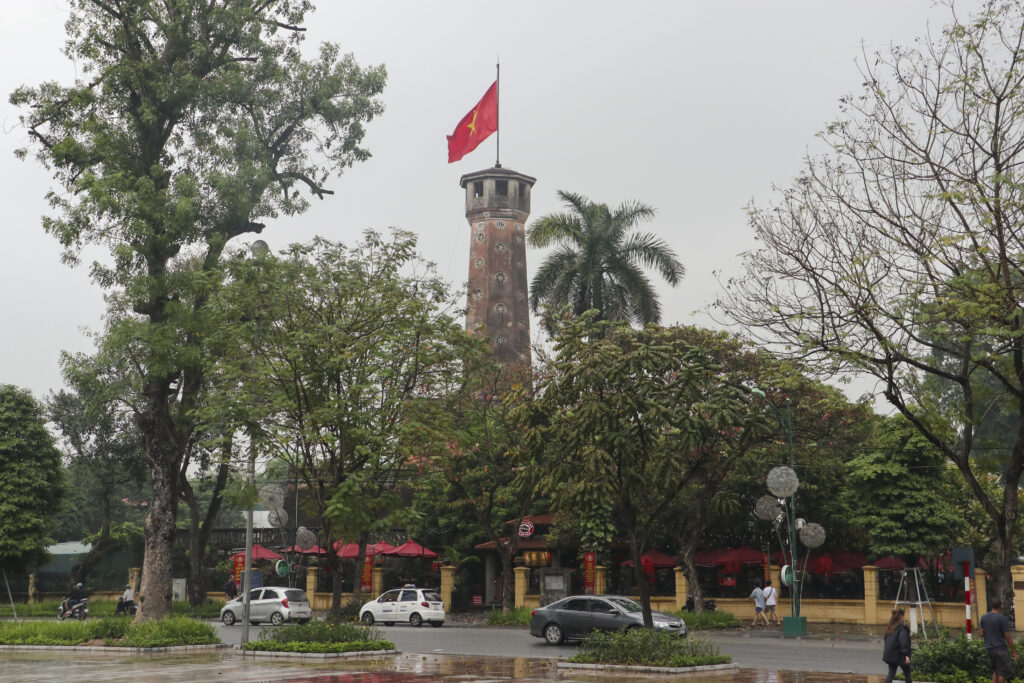
I find this to be a fascinating place although so much is gone. The old flag tower remains to this day. By the south wall, overlooking what was then countryside, it played a strategic role for the defenders of the city. Today it is one of the symbols of Hanoi. A couple of the old gates are still around, with the Doan Mon gate as the most significant one in the center of the museum area. The north gate is also still intact and carries scars from a French attack during the late 1800s.
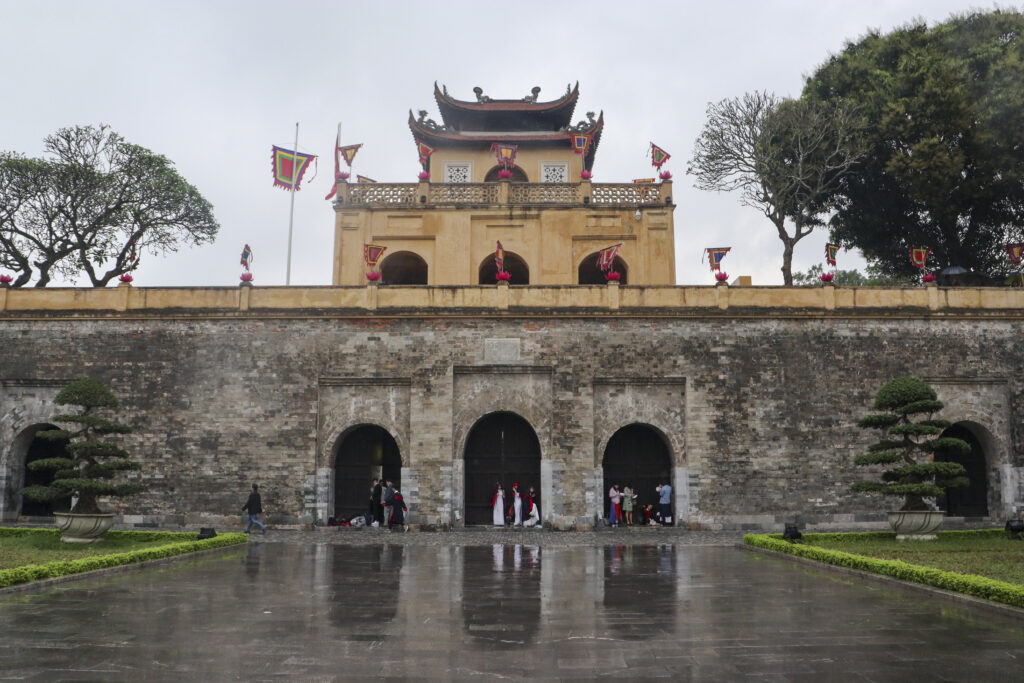
I was fortunate enough to be invited to look at the excavations of the old citadel remains as they had started back in 2004. The excavations are still active as they keep making new finds and a large area is being explored.
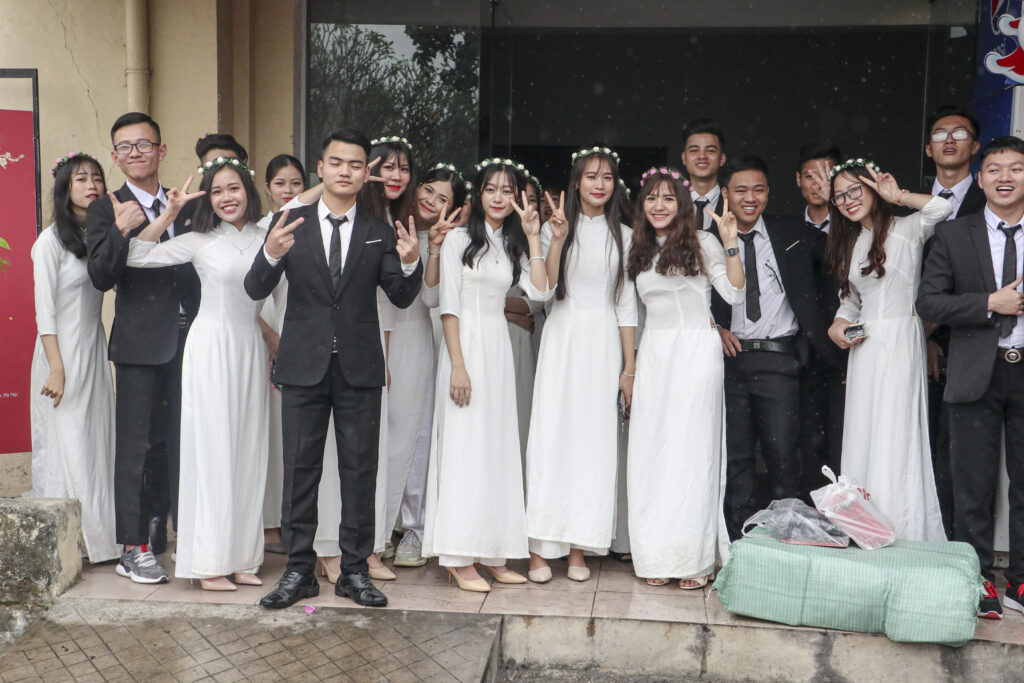
A lovely part of the spectacle is that the Citadel has also become a popular place for local students to go and have their pictures taken after finishing their exams. During our last visit, there were hundreds of young students moving around the whole area and it was almost impossible to take a picture without at least a few of them in the frame.
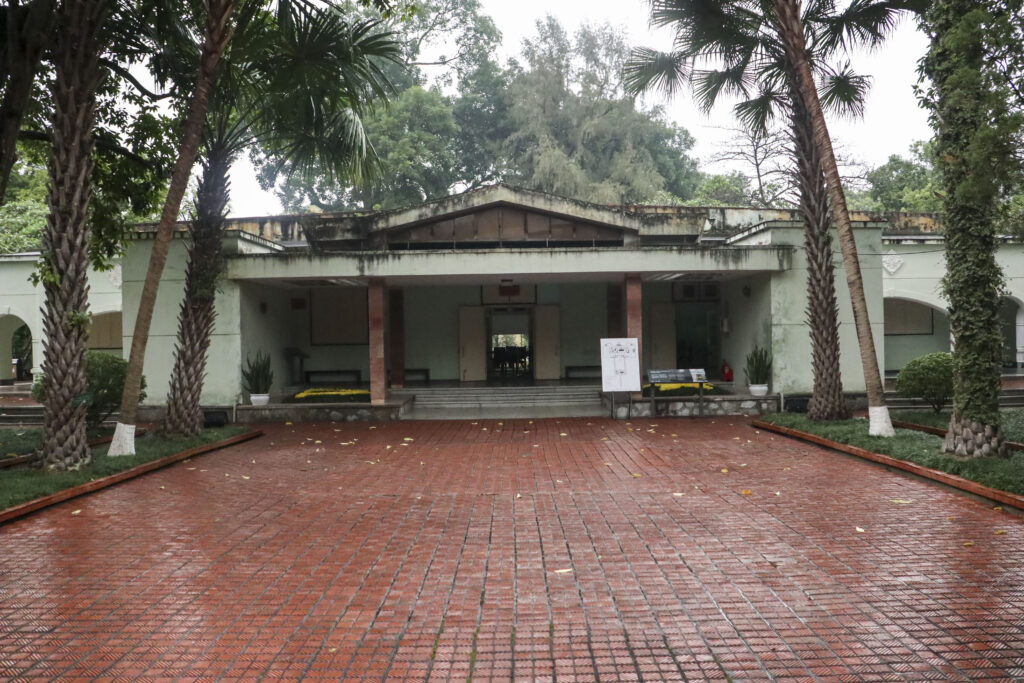
Inside the Citadel there is also a building of more modern interest and especially for the readers of this website. The D67 building was a purpose-built house built for the North Vietnamese leadership from where they would plan and lead the war effort. It is a tiny inconspicuous modernist house hidden among trees in the northern part of the Citadel. Beneath the house they also built a bunker where the generals and leaders could seek shelter during American bomb attacks. While visiting the citadel, one should make sure to stop by and also step inside. The main meeting room has name tags for where each person would sit during their meetings as well as maps and other items on display. As you stroll around you will also come to the office of General Vo Nguyen Giap, Ho Chi Minh’s loyal general from the early days and the architect behind the victorious battle at Dien Bien Phu.
Adjacent to the citadel is also the Vietnam Military History Museum. At our latest visit to Hanoi we didn’t visit it though. It has a bit of a different feel than the War Remnants Museum in Ho Chi Minh City (Saigon), like most things are different between the two cities.
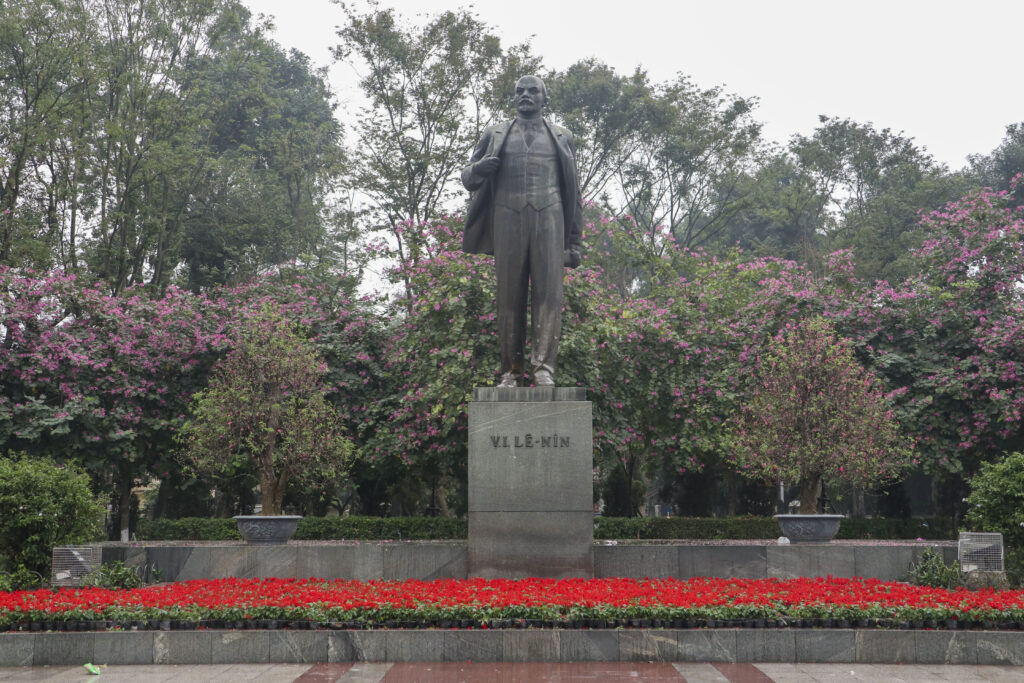
Across the Dien Bien Phu street from the museum is also one of the few remaining statues of V.I. Lenin. It is an odd feeling seeing it there, since it seems so obsolete to a Western visitor. Yet for the Vietnamese, it is a symbol of their ideological heritage and a foundation for the modern state.
Just a bit up the street from the flag tower is one of Hanoi’s most famous landmarks, the Ho Chi Minh Mausoleum. This is where the embalmed body of the revolutionary leader is on display. Outside the building is the vast Ba Dinh Square where the honorary guard patrols and the government sometimes holds military parades.
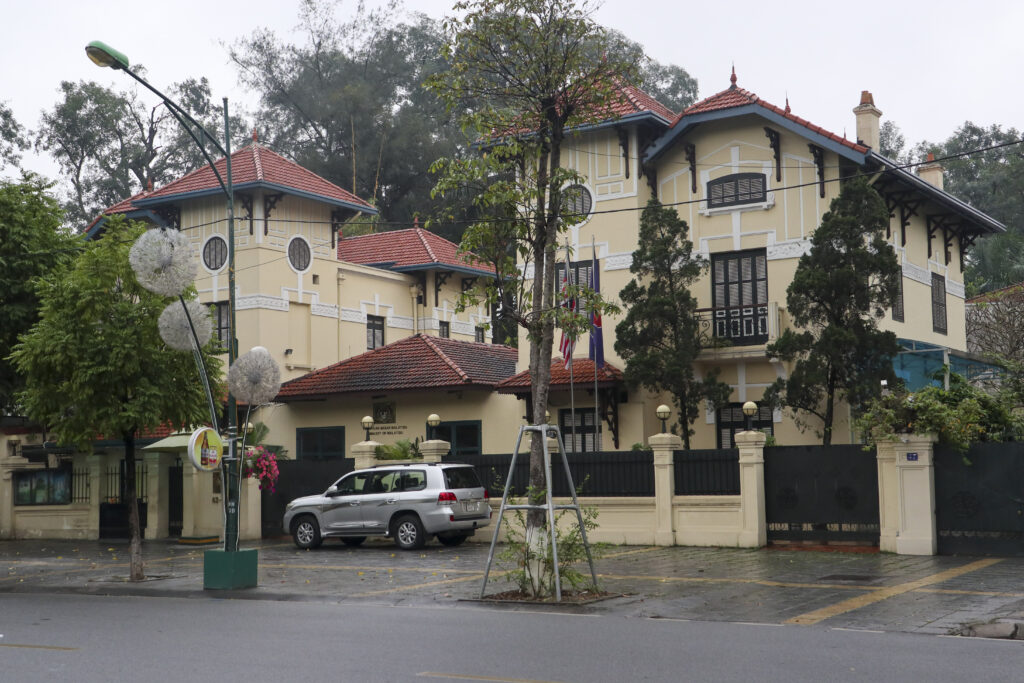
The Ba Dinh district around here is gorgeous, with block after block of large beautiful colonial villas. Many of them house embassies today and so they have been kept in very good condition. A walk here will give an idea of what the city looked like here almost a century ago.
War history sites
Having been the epicenter of French colonization, Hanoi hosts plenty of interesting locations from that era. All across the city there are colonial buildings reminding the Vietnamese of a dark time in their country’s history. Yet architecturally, many of them are still stunning and are used today by the government. Perhaps the best example of that is the former residence of the French Governor of Indochina, which is today the presidential palace, located at the northern end of the Ba Dinh Square.
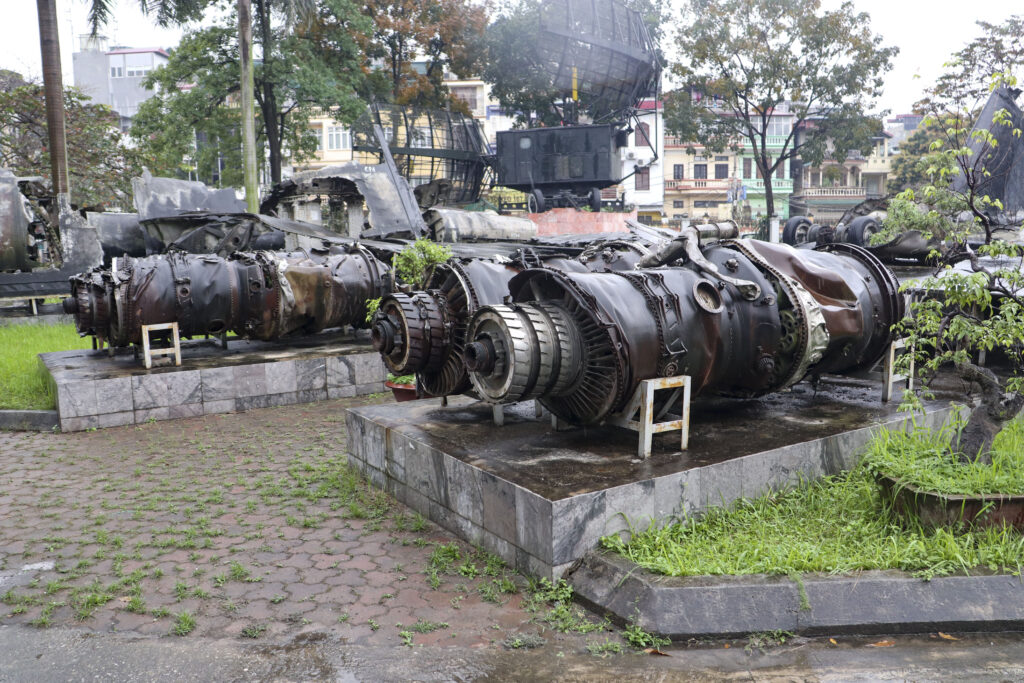
During the American war there was no fighting on the ground in North Vietnam. That doesn’t mean Hanoi didn’t suffer the horrors of war, however. American warplanes would regularly bomb Hanoi and its outskirts.
The bombing campaigns were always aimed at military targets of some kind, be it bridges, radar installations, factories or fuel depots, despite allegations that the Americans were targeting civilians. That doesn’t mean the city wasn’t at risk, however, as bombs often fall in the wrong place. Such was the case in the tragic bombing of the Bach Mai hospital.
Around the city there are plaques and monuments to commemorate the shooting down of American warplanes. One of the most famous sites is where former Senator John McCain was shot down and landed with his parachute in Ho Tay, West Lake.
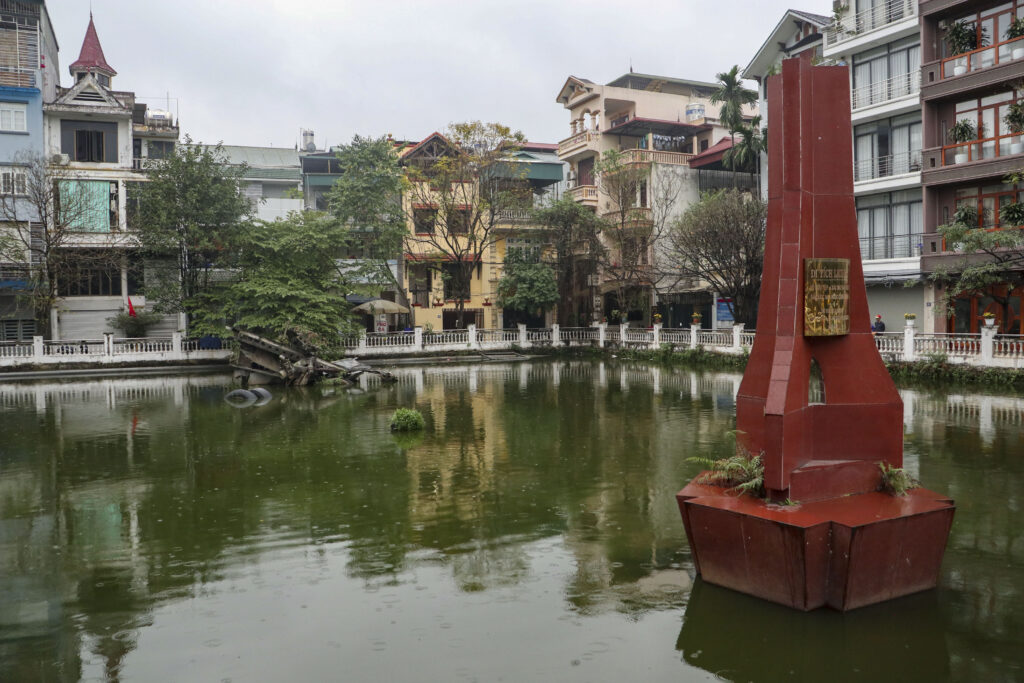
Nearby, in a small pond in a residential area, there are parts of a B52 bomber with a monument next to them. Along the Nguyen Thai Hoc street, there is a plaque about a shooting down of an American jet
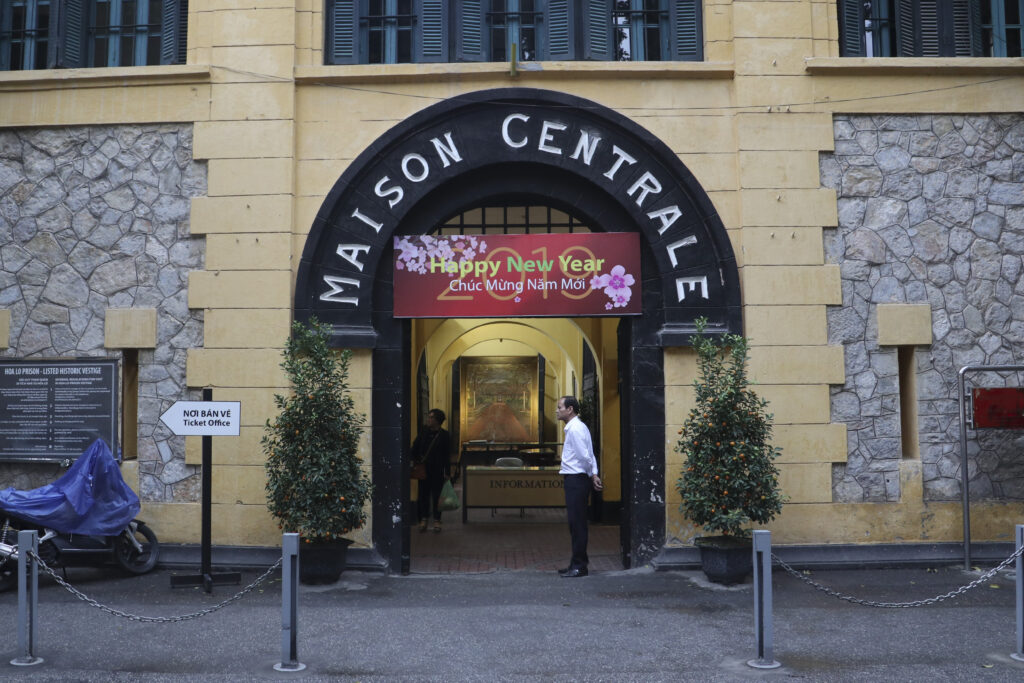
Another well known site is of course the Hanoi Hilton. The Hoa Lo prison was built by the French in the late 1800s to house political prisoners resisting the French colonization. Later it was used by the North Vietnamese government to house American prisoners of war, mostly pilots that were shot down during their bombing raids over North Vietnam. The prison was largely torn down during the 1990s to make way for a Singapore built high rise hosting offices and a small shopping mall. In what remains of the prison, there is today a museum. Notable people who were imprisoned here includes the late Senator John McCain and the first U.S. ambassador to Vietnam, Pete Peterson.
JT
When to visit
Located in the north of the country, Hanoi does not have a tropical climate. The year brings four distinguishable seasons. The best time to visit is after the rainy season from October until December and also before the rain starts in March and April. Around January and February, it can be a bit colder, down to 10 degrees Celsius but more often between 18 -25 degrees. Personally I prefer the slightly cooler days for exploring the city on foot.
If you liked reading this article or if you think we left out something that should have been included, please leave a comment below.
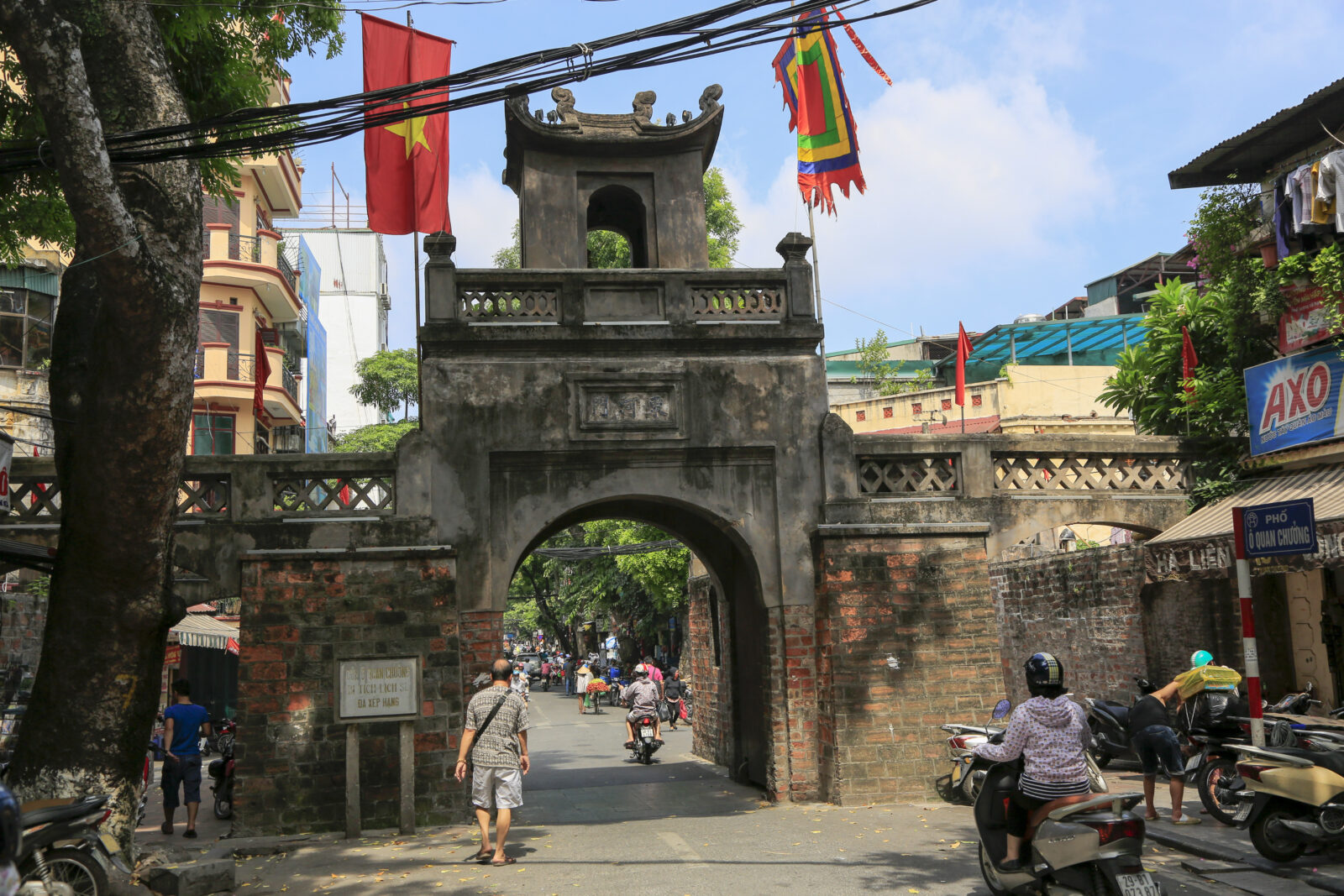
Thank you Jonas for your footage of Hamburger Hill.
Thank you Tim, it was my honor. If you have any questions about the hill you can always reach me through Mike. I remember you asked something last year about the road up the hill.
Nice article, Jonas. Not only a wonderful travelogue but insightful as well. Love the history, the texture of time and place, and the photos of the food! Deep down inside we all wish to explore new places, meet and talk to good people, and then sit down to a satisfying meal and take in the ambience of a journey.
Thank you for the nice words Kregg. Oh and I will get your piece up within a few days also. It will be an honor to have a story from you here on the site. And you express it so well about travel. Being on the road exploring new places is such a treat. But it’s also nice to get back home every now and then.
Hey Kregg. Loved your books. I even saw you get shot on you tube! LOL. I know I shouldn’t laugh but……. “gads darn it !!” That’s what you get for always walking “POINT”!!! LOL. Thanks for your Courage and Welcome Home, Brother. I actually taught ESL (English as a Second Language) in Snoul, Cambodia for awhile in 2015. Snoul was one of the American Army’s “targets” during the Cambodian Incursion of early 1970 when I think you got shot. Snoul was about 15 miles West of the the border crossing between Cambodia and Vietnam on the hi-way that traveled East towards Tay Ninh, Cu Chi, Ho Chi Minh City. I would bet that at times there were “Boo Cu” NVA in the Snoul area! I spent 2 years and 10 months teaching ESL in Cambodia. Quite the experience!
Love all your coverage Jonas. Well done my friend.Randy
Thanks man. It means a lot coming from you. The world is a better place with you in it. I am proud to be your friend.